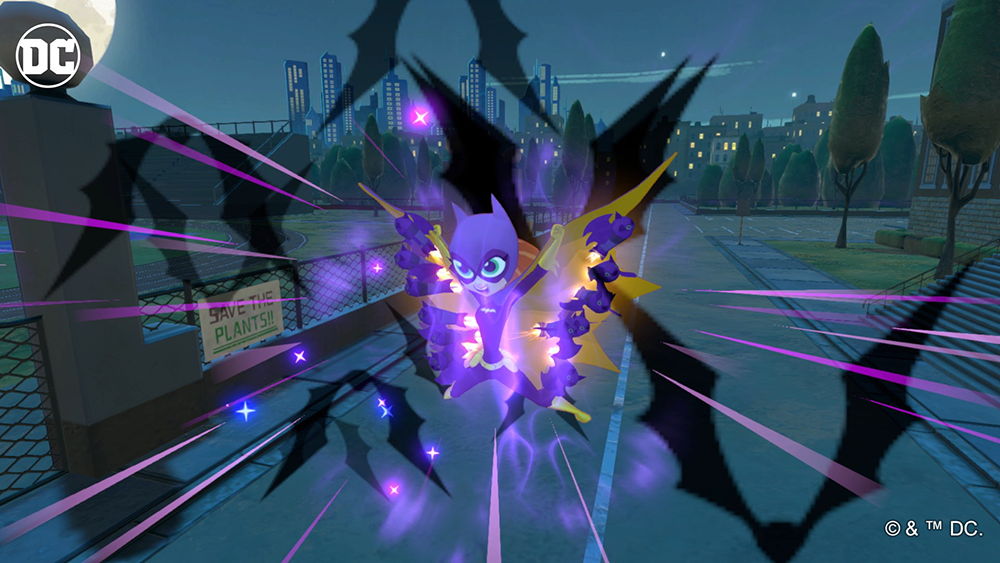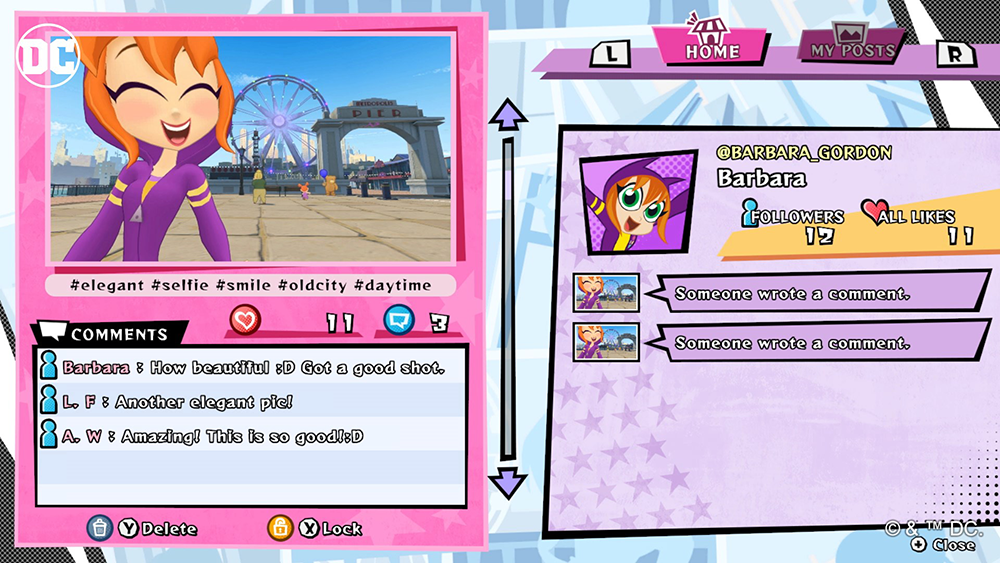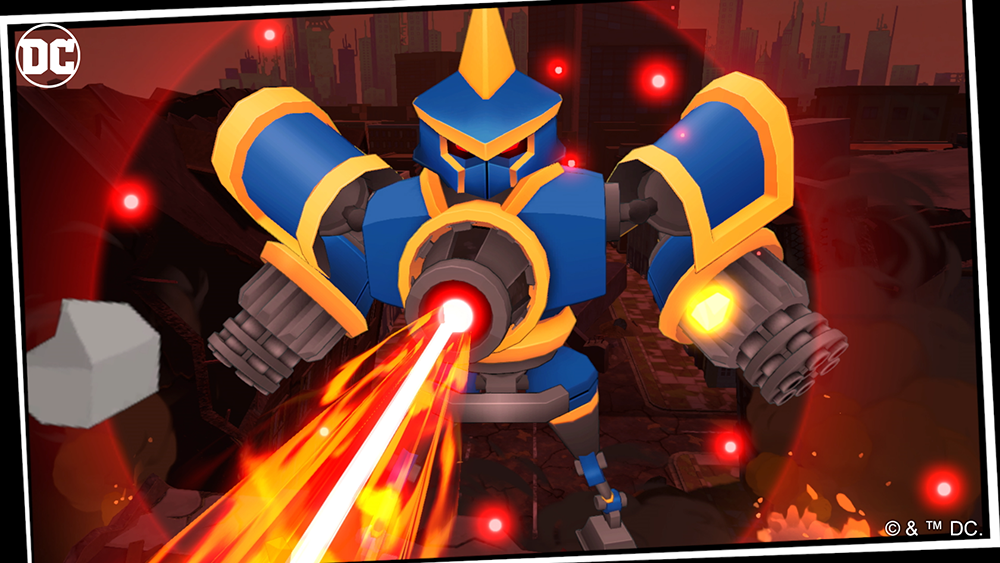Defeat baddies in this kid-friendly adventure game.
DC Super Hero Girls: Teen Power is now available for Nintendo Switch, and SuperParent had the chance to check it out.
DC Super Hero Girls: Teen Power is an adventure game inspired by the DC Super Hero Girls animated series, which follows teenage versions of super heroes like Wonder Woman, Batgirl, and Supergirl on adventures.
In DC Super Hero Girls: Teen Power, evil toys and robots are attacking Metropolis, and players will need to help the super heroes defeat these enemies and figure out who is controlling them. Along the way, they’ll need to battle against some of DC’s super villains (like Harley Quinn and Cat Woman) who are up to no good.
DC Super Hero Girls: Teen Power is an open-world adventure game that features kid-friendly combat. The game allows players to explore the Old City and Hob’s Bay areas of Metropolis, as well as hang out near Metropolis High School, where the super heroes and super villains go to school.
Players can complete both main missions and side quests as they work to fight crime around Metropolis. In each mission, players can control a single playable character. At first, players will only be able to choose from Supergirl, Batgirl, and Wonder Woman, but they’ll eventually unlock Harley Quinn, Star Sapphire, and Cat Woman as playable characters. (Without spoiling too much of the story, controlling the villains makes sense in this case, as the two groups realize they need to work together to take on the evil toys and robots around Metropolis.)
When playing through the game’s missions for the first time, players will only be able to play as characters that match their current point in the story. However, the game also allows players to replay missions they’ve completed, and when they do, they can choose to play as any of the characters they’ve unlocked.
Some missions challenge players to work on their own to complete tasks, while others allow them to bring in two other characters as supporters. These characters are controlled by the game — there’s no character swapping once a mission begins.

During battles, players can repeatedly tap a single button to perform attack combos (that is, they aren’t required to memorize long button combinations). Each character also has special skills that can be unlocked over time. Some of these skills allow players to quickly deal major damage to one or more enemies, while other skills simply give the girls new abilities (for instance Batgirl’s Bat Hook can be used to quickly reach the top of a building). Some of the characters even have passive abilities that are always available (for instance, Supergirl can fly and Cat Woman can climb walls).
As players complete missions, they’ll earn a star rating based on their performance. There are four possible ratings for each mission — the higher the rating players earn, the more rewards they’ll receive for the mission. As we mentioned, players can replay missions in an attempt to improve their high score and earn extra rewards.
Rewards come in the form of coins and stars. Coins can be spent on costumes for the game’s characters (players can dress up the “teen” version of each character, as well as change each one’s super hero or villain costume). Stars, meanwhile, can be used to upgrade each super hero or villain to improve their stats and unlock new abilities.
Players can also spend coins to rebuild Hob’s Bay, which is destroyed at the beginning of the game by rampaging robots. This rebuilding project allows players to choose each building that will be constructed in the area. While most buildings are just “for looks,” players can also construct clothing stores that let them purchase costumes for their characters.
In between missions, players can fast travel to different locations around the in-game map, search for a variety of collectibles, take on side quests (some of which feature their own combat missions), and take pictures using the in-game camera. When players are in-between missions, they can freely switch between any of the characters they’ve unlocked and use them to explore the game’s world.
Finally, the game features a fictitious social network called Superstapost. Players can share the pictures they’ve taken with the game’s camera to Superstapost to earn “Likes” and “Followers,” and they actually need to earn a certain number of followers for one of the game’s side quests.
For the most part, we really enjoyed DC Super Hero Girls: Teen Power, but the game does have a couple of issues.
For one, many battles feature multiple enemies to defeat at the same time, which can result in some chaotic gameplay. Players have the ability to dodge enemy attacks, but dodging sometimes feels impossible when there’s so much going on and you can’t tell when an attack is coming.
Players can also “lock onto” an enemy during combat to keep track of their movement and aim their attacks at that specific one. However, if the enemy is fast-moving, this makes the camera move around really frequently, which can be disorienting. You aren’t required to lock onto enemies to attack them, so if this bothers you, you can simply ignore this feature.

While DC Super Hero Girls: Teen Power features voice acting by the show’s cast, some portions of the game aren’t voiced, so players need to know how to read. In addition, there’s a moment in the game’s dialog where a word of adult language is implied but never actually spoken or written.
It’s also worth noting that this game doesn’t have a “serious” or “gritty” tone. Instead, it’s lighthearted and sometimes goofy, and you’ll need to suspend your disbelief as the story unfolds. For instance, while every super hero knows the secret identity of every other hero and every villain knows the identity of every other villain (in terms of the main super villains), the heroes and villains don’t know the secret identities of one another, even though they’re terribly obvious (characters like Wonder Woman and Star Sapphire don’t wear masks, so they’re not really hiding their identities as all). This concept doesn’t ruin the experience, but it definitely adds some silliness to the story.
Finally, while this isn’t a terribly difficult game, some missions are more challenging than others, and it is possible to fail a mission by running out of health (while health pickups are available, they’re sometimes too few and far between). If players fail a mission, they can retry it again from the beginning. If they fail the same mission multiple times, the game will ask if they’d like to turn on “Help Mode.” This mode makes a mission easier, but it removes the ability for players to earn stars on that mission (some missions don’t have the “Help Mode” option available).

Even though it has a few problems, DC Super Hero Girls: Teen Power is a fun adventure game that both kids and adults can enjoy. With six playable characters, who each have different abilities and specialities, players can test each one to find the character that best suits their play style, and there’s plenty to do even after the credits roll (unless you’re really thorough before completing the game).
We recommend checking this one out.
DC Super Hero Girls: Teen Power is now available on Switch for $59.99. The game is rated E10+ for Everyone 10+ by the ESRB.
Disclosure: SuperParent received a code for this game for coverage purposes.
Brandy Berthelson has been writing about video games and technology since 2006, with her work appearing on sites including AOL Games, Digital Spy, and Adweek. When she’s not gaming, Brandy enjoys crafting, baking, and traveling with her husband.